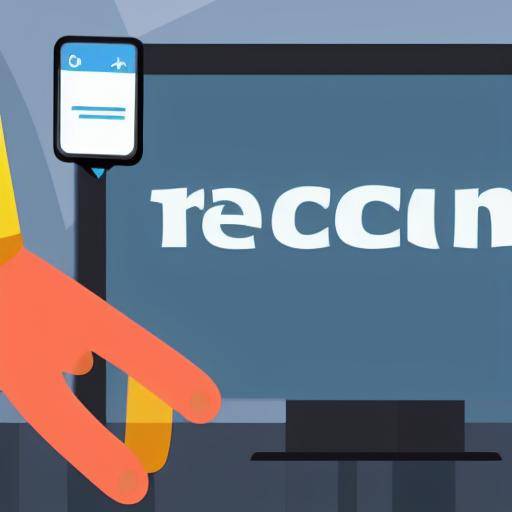
Introduction
In a working environment, motivation plays a crucial role in employee performance and satisfaction. One of the fundamental pillars of motivation is to establish clear goals that can be achieved through an effective reward system. In this article, we will explore the importance of identifying clear goals for the reward system and its impact on staff motivation. From its historical evolution to future trends and predictions, our goal is to provide a holistic vision that helps business leaders to optimize their motivation and reward strategies.
Objectives: The Base of Motivation
Clear objectives are fundamental to staff motivation. When collaborators clearly understand what is expected of them, they are more inclined to work with focus and determination to achieve those goals. In addition, clear objectives provide a framework for assessing performance and measuring achievements, which contributes to transparency and equity in the reward system.
Reward System: An Effective Incentive
A well-designed reward system can be a powerful motivator for employees. Beyond simply meeting job expectations, rewards offer recognition and gratification, which drives labor satisfaction and commitment. From wage bonuses to formal recognitions, rewards can take various forms, but their positive impact on staff morals and productivity is undeniable.
The Importance of Motivation
Motivation is the fuel that drives workers to achieve their goals and contribute to organizational success. A motivated staff is not only more productive, but also shows higher levels of commitment and loyalty to the company. Therefore, understanding how to identify clear goals for the reward system becomes essential in the context of talent management.
History and Background
The concepts of clear goals, reward and motivation systems have evolved throughout the history of administration and organizational psychology. From Taylor and Fayol's traditional approaches to contemporary theories of motivation, such as Adams' theory of equity and Locke's theory of setting goals, the field has experienced significant development.
Traditional Approaches and Classical Theory
In the paradigm of scientific administration, Frederick Taylor proposed the notion of work and reward, laying the foundation for future research on labour efficiency and fair compensation. On the other hand, Henri Fayol emphasized the importance of establishing clear objectives at the organizational level to ensure efficiency and coordination.
Evolution of Contemporary Theory
As organizational psychology matured, more complex theories about labor motivation emerged. Adams' theory of equity, focused on comparing personal contributions and rewards with those of others, and Locke's theory of setting goals, which emphasizes the importance of specific and challenging goals for performance, have had a significant impact on modern management.
Impact of Technology and Globalization
With the arrival of the digital era and globalization, reward and motivation systems have had to adapt to a constantly changing business environment. Flexibility and individualization have become pillars of talent management, leading to new strategies for the identification of clear goals and the administration of rewards.
Analysis in Deep
Current Benefits and Challenges
Clear goals-based reward systems offer a number of benefits for both employees and the organization as a whole. In addition to motivating employees to achieve specific goals, these strategies can foster collaboration, innovation and commitment to the vision of the company. However, there are also challenges, such as the possibility of generating unfair competition or the exclusive approach to short-term results to the detriment of long-term goals.
Trends and Relevant Statistics
The analysis of current trends in the identification of clear goals and reward systems reveals significant data on their impact on the workforce. According to recent studies, companies using objective-based reward systems report higher levels of labor satisfaction and productivity, which supports the effectiveness of these strategies in diverse business environments.
Multiple perspectives
Approaches to the identification of clear objectives and the administration of reward systems can vary considerably according to the industrial sector, organizational culture and hierarchical structure. Explore the different perspectives around these issues provides a more comprehensive view of their practical application and the specific challenges they face in diverse contexts.
Comprehensive review
Applications and Practices
The successful implementation of clear goals in reward systems is illustrated by specific case studies that highlight the effective strategies used by various organizations. These practical cases offer valuable insights on how to adapt fundamental principles to specific work environments and achieve optimal results.
Opinions of Experts and Future Implications
The reflection of human resources experts, employment psychology and leadership provides a deep understanding of future implications of more effective management of clear goals and reward systems. Anticipating emerging trends in this field is critical to adopting proactive strategies that align with the changing demands of the working environment.
Comparison of Methods and Approaches
By critically analysing the different methodologies and approaches used to identify clear goals and reward systems, it is possible to identify the most appropriate strategies for specific contexts. Considering the advantages and limitations of each approach allows business leaders to make informed decisions about the most effective implementation in their own organizations.
Comparative analysis
Objectives Claros vs. Reward System
While clear objectives are the basis for an effective reward system, it is crucial to understand the differences and interrelationships between these two elements. The clarity and alignment of the goals can enhance the impact of rewards, but it is also important to recognize how rewards can influence the definition and achievement of long-term goals.
System of Rewards vs. Motivation
Reward systems are intertwined closely with staff motivation, as effective rewards can stimulate employee performance and dedication. However, motivation is a more complex phenomenon and encompasses a wider range of factors, including personal values, intrinsic recognition and satisfaction. Exploring these relationships is essential to optimize talent management.
Objectives Claros vs. Motivation
The clear objectives provide the structural framework to boost staff motivation, as they provide direction and purpose to individual and collective actions. However, motivation is a multidimensional result that goes beyond the mere definition of goals, covering emotional, cognitive and behavioral aspects that influence commitment and productivity.
Practical Tips and Accessible Advice
Effective Approaches to Identify Clear Objectives
Setting clear objectives requires a deep understanding of the needs and capacities of employees, as well as organizational objectives. Some effective approaches include the active participation of employees in the goal-setting process, the definition of SMART objectives (specific, measurable, achievable, relevant and time-bound), and the alignment of individual objectives with the vision and mission of the company.
Strategies for the Management of Reward Systems
In designing reward systems, it is essential to consider the diversity of employee needs and preferences. From financial bonuses to non-monetary recognitions, organizations can implement a combination of tangible and intangible rewards that reflect the value and contribution of employees. Transparency and equity in the administration of rewards are key to their effectiveness and acceptance.
Orientation to Maximize Labour Motivation
The maximization of labor motivation goes beyond the implementation of clear goals and reward systems. Issues such as inspiring leadership, frequent recognition, professional development and a positive working environment play a significant role in creating a motivated organizational culture. Business leaders should foster an environment that promotes trust, personal growth and work.
Industry Perspectives and Expert Reviews
Access to the Expert Experience
In-depth interviews with opinion leaders and experts in human resources, working psychology and business management offer a privileged view of current practices and trends in identifying clear goals and reward systems. The views and advice of these professionals provide a valuable context for informed decision-making.
Implications for Future Talent Management
Reflection on emerging trends and future projections around motivation and reward offers business leaders guidance on strategies that will be more relevant and effective as the working environment continues to evolve. These projections serve as a beacon for anticipating challenges and opportunities.
Case Studies and Practical Applications
Case studies
Detailed case studies provide a tangible understanding of how companies have successfully implemented clear goals and reward systems to maximize the performance and commitment of their employees. These real examples allow us to identify successful practices that can be adapted to different business contexts.
Results and Lessons Learned
In analysing the results and lessons learned from practical cases, it is possible to identify patterns and best practices that can inspire the adoption of similar approaches in other organizations. Understanding how these strategies impacted productivity, working climate and talent retention offers valuable insights for business leaders.
Future Trends and Predictions
Related Emerging Trends
Emerging trends in talent management suggest a shift towards more personalized and agile approaches in identifying clear goals and managing reward systems. Flexibility, the inclusion of qualitative metrics and the integration of innovative technologies are aspects that could shape the future of motivation and reward in the workplace.
Current Data-Based Predictions
Based on current data and trends noted, human resources experts and organizational management offer predictions on direction that could take motivation and reward strategies in the future. These predictions allow business leaders to prepare for the changes ahead and adopt a proactive approach to talent management.
Conclusions and FAQs
Recapitulation of the Key Points
The identification of clear goals for the reward system is a key element in driving staff motivation and business performance. The combination of clear goals, effective reward systems and a comprehensive labour motivation strategy can generate a significant impact on productivity, commitment and retention of talent.
Final Perspectives and Recommendations
In addressing the management of clear goals and reward systems, it is essential to adopt a holistic approach that considers psychological, cultural and organizational aspects. Transparency, equity and adaptability are fundamental pillars for the design of effective strategies that promote staff motivation and performance.
Frequently asked questions
How can I ensure that clear goals are attainable but challenging for my employees?
It is essential to involve employees in the goal-setting process, ensuring that SMART goals are defined that combine realistic challenges with growth opportunities.
What is the impact of non-monetary rewards on staff motivation?
Non-monetary rewards, such as public recognition and development opportunities, can be equally effective in motivating employees, generating a sense of value and belonging.
What role does technology play in the effective management of reward systems?
Technology can facilitate the administration of rewards, allowing personalization and adaptation to individual preferences, as well as transparent monitoring of achievements and contributions.
Why is it important to periodically review and adjust the goals and reward systems?
The periodic review allows us to adapt the objectives and rewards to changes in the business environment and the needs of employees, keeping them aligned with organizational and personal developments.
How can I foster a working environment that promotes long-term motivation?
The creation of an organizational culture that values transparency, participation and personal development can foster sustained motivation among employees, generating a long-term impact.
What strategies can help promote equity and justice in the administration of rewards?
The clear definition of evaluation criteria, constant feedback and the inclusion of various forms of recognition are key elements in ensuring equity in the administration of rewards.
Conclusion
The identification of clear goals for the rewards system is a fundamental pillar to enhance staff motivation in working environments. By understanding the impact of clear goals, effective reward systems and motivation strategies, organizations can cultivate an enriching working environment, boost productivity and retain key talent. In the future, attention to emerging trends and proactive adaptation of motivation strategies will be critical to maintaining relevance and effectiveness in a dynamic business environment.
This article has explored in depth the key elements related to the identification of clear objectives, reward systems and their influence on staff motivation. In addressing best practices, emerging trends and expert perspectives, business leaders are expected to acquire valuable insights that will enable them to strengthen their strategies and achieve the maximum potential both at the organizational and individual levels.






















































